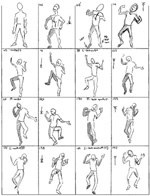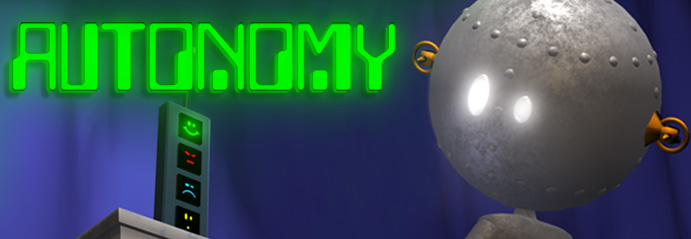Animation Mentor:
How did you come up with the concept for your short film?
Brad Regier:
The inspiration came from a film I remembered from Sesame Street when I was a kid, in which an inventor demonstrated a robot with emotions. I wanted to add a twist in my own story by having the robot gain the upper hand on humanity. So I introduced the mind control angle and a third character (the crowd offscreen).
Animation Mentor:
What important lessons did you learn from making your short film?
Brad Regier:
Always listen to the opinions of others. They'll point out things you never thought of. Also, Mozart is good music to listen to while animating.
Animation Mentor:
How long did it take to complete your film?
Brad Regier:
Because telling my story required longer than a half minute of screen time, I chose the option of taking Class 6 twice. So the project went from concept through production in nine months—with some final polish before rendering.
Animation Mentor:
How much planning was put into your short film? Did planning help make the process easier?
Brad Regier:
I shot a lot of video reference, acting out the story and editing together the best takes. I definitely benefited from this reference when animating, although I wish I had experimented with different poses.
Animation Mentor:
Do you mind sharing some of the pre-production work with us with a little explanation of what we're looking at.
Brad Regier:
Story Pitch: Here's the original story pitch. The characters I refer to (Stewie and Murdock) are two of the rigs AM supplies. I ended up using the school's Bishop rig for the inventor, because his face was more suited to the part.
Animatic: I really enjoyed drawing the 2D animatic. My mentor talked me into giving the story a happy ending.
Layout: In layout I nailed down the basic timing, camera angles, and characters' poses.
Thumbnails: Here's an example of my thumbnail sketches: analysis of the robot's happy dance (from video reference).

Click image to view in new window
Blocking: Here you can see a rough pass of animation. Notice that the acting is busier and more exaggerated compared to the final performance. My mentors and classmates urged me to simplify the acting of both characters.
Animation Mentor:
What obstacles, if any, did you experience during the creation of your short film? How did you work your way around them?
Brad Regier:
In the layout phase (Class 5) I had some technical difficulties with the rigs, in part because I had referenced them into the Maya files. So in Class 6, I decided to redo the layout—importing the rigs into each scene instead. Fortunately my layout was fairly simple and ended up better the second time around because of the feedback I had received.
Animation Mentor:
Tell how your Animation Mentor experience helped you in creating your short film.
Brad Regier:
The community at Animation Mentor was very helpful. Advice was never more than a forum post, a video conference, or an email away. And with the growing AM alumni community ever present to offer support, I'm eager to start my next project!
|



